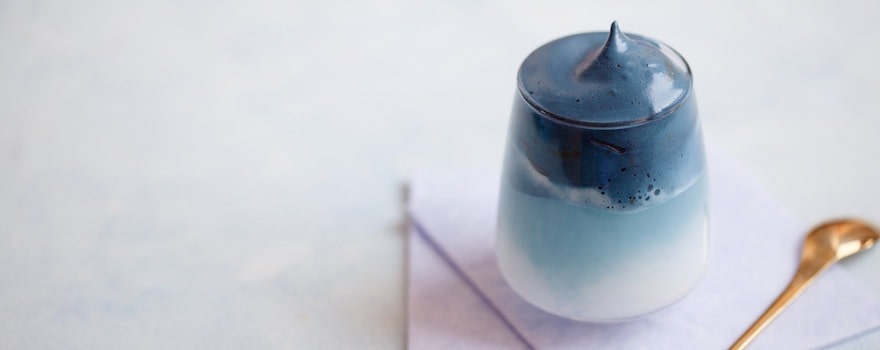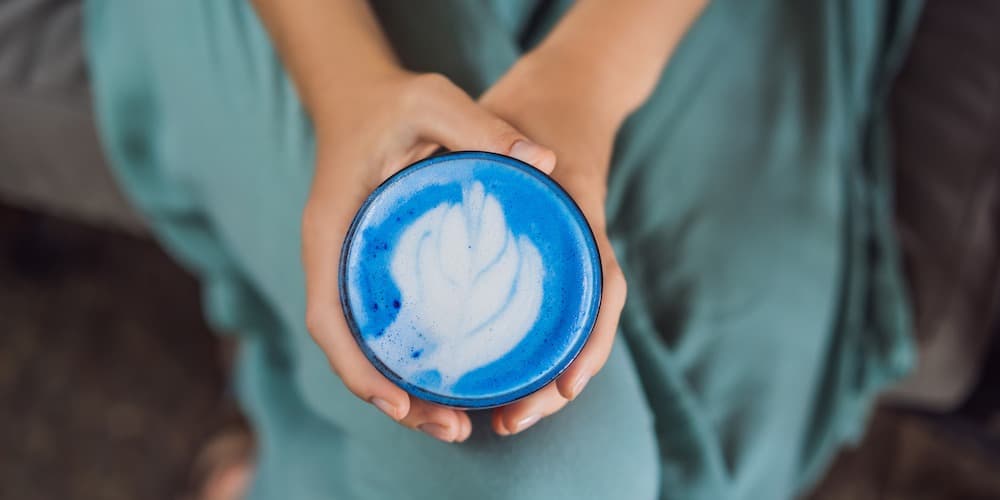What is phycocyanin?
Spirulina, the most nutritious food after breast milk
3.5 billion years old, the spirulina (Arthrospira platensis) is today one of the most sought-after superfoods in the world. It is not an alga but more precisely a cyanobacterium, that is, a colony of bacteria that together form filaments. Spirulina therefore differs from the chlorella (Chlorella vulgaris) which, in contrast, is a microalga.
Spirulina is now present in the lakes of many countries, both in Africa and in South America and in Asia. It grows in fresh and alkaline waters, provided it finds favorable conditions for growth. To meet the growing global demand without harming natural resources, spirulina is now cultivated in artificial ponds.

Numerous scientific studies have contributed to its popularity. Researchers have highlighted its incredible composition. Its richness is such that spirulina is considered one of the most nutrient-rich foods.
Proteins, amino acids (including the eight essential ones), vitamins, minerals and trace elements, omega-6s, antioxidants… are among the compounds found in the cyanobacterium. They all have beneficial effects on the body and confer many properties to spirulina.
During their studies, researchers also discovered one of the active compounds responsible for its benefits : phycocyanin
Phycocyanin, the blue-green pigment of spirulina
Spirulina contains antioxidant pigments such as chlorophyll, carotenoids and phycocyanin. The latter is responsible for its characteristic blue-green color. This explains its name, derived from the Greek “phyco” (meaning “algae”) and “cyan” (meaning “blue”). Few foods contain phycocyanin other than spirulina. These include the klamath, a micro‑alga from the United States, and the moringa.

Phycocyanin itself is made up of proteins and pigments called phycobiliproteins and phycocyanobilins. They give it its color and contribute to the photosynthesis necessary for cyanobacteria to feed. Thus, phycocyanin captures light energy which, through a series of reactions, is converted into organic matter.
But this pigment does not only play a role in photosynthesis: it also gives spirulina much of its benefits. Once phycocyanin was isolated, researchers were able to demonstrate some of its properties. In addition to being a powerful antioxidant, it affects many functions of the body.
Also read the Our guide to buying phycocyanin-rich spirulines
The benefits of phycocyanin
Fights free radicals
Phycocyanin is above all an antioxidant pigment that helps protect the body from free radicals and their damage: destruction of cells and tissues, accelerated aging, or an increased risk of diseases (cardiovascular diseases, neurodegenerative diseases, cancers…).
Phycocyanin exerts a much stronger free radical-scavenging activity than vitamin C or vitamin E. This study notably shows the action of phycocyanin on 3 different radical species: the superoxide anion (O2), the hydroxyl radical (HO) and the alkoxyl radical (RO).
Reduces inflammation
Phycocyanin also has beneficial effects on inflammation thanks to its anti-inflammatory properties. As shown by this study, it notably blocks the action of cyclooxygenases (COX-2), enzymes responsible for inflammatory conditions and pain, and prostaglandin EP4 which plays an important role in inflammation.
Also read the These natural and tasty anti-inflammatory foods
Phycocyanin is therefore ideal for relieving inflammation and rheumatism.
Potentially anti-diabetic
Phycocyanin also plays an important role in the fight against type 2 diabetes. Some studies, such as this one, have shown that it lowers blood sugar levels, reduces fasting blood glucose, increases insulin sensitivity and reduces insulin resistance.
Moreover, phycocyanin increases the level of glucokinase in the liver and pancreas, an enzyme involved in glucose metabolism and the regulation of blood sugar.
Relieves allergies
Thanks to its immunomodulatory effect, phycocyanin regulates excessive immune reactions in cases of allergy. To do this, it increases the production of IgA antibodies (immunoglobulin A) while reducing the levels of IgG1 and IgE antibodies, which are produced in excess during allergic reactions. This is what researchers were able to demonstrate in this study.
Also read: A natural antihistamine to relieve allergies? Here are 10
Enriches the gut microbiota
Spirulina phycocyanin also has a beneficial effect on the gut microbiota. As shown by this study, it increases the number of bacteria and of probiotics that produce SCFAs (short-chain fatty acids), short-chain fatty acids necessary for intestinal health.
Prevents neurodegenerative diseases
Phycocyanin is also an interesting ally for preventing neurodegenerative diseases thanks to its neuroprotective effects. In addition to protecting the brain, it stimulates neuronal activity and supports their growth and survival.
This study also shows that phycocyanin helps reduce brain inflammation involved in neurodegenerative diseases such as Alzheimer’s disease.
Protects the liver
As shown by this study, spirulina phycocyanin is hepatoprotective : it protects the liver and its enzymes from the toxicity of chemicals, heavy metals, or even chemotherapy treatments.
Potentially anti-cancer
Finally, phycocyanin is recognized for its potential anti-cancer effects. In this study, it blocked the growth of cancer cells by inducing apoptosis (programmed cell death) and autophagy (a process that allows cell regeneration).
This study also shows that it interacts with various genes, proteins, and enzymes to kill cells resistant to chemotherapy.
Choosing the right phycocyanin
In what form should you consume it ?

In spirulina, phycocyanin is present at 10 to 18 %. Consuming spirulina directly is therefore a good way to enjoy the benefits of this pigment (in addition to those of the cyanobacterium). In this case, preferably choose an artisan, French spirulina.
It is also possible to find pure phycocyanin extracted directly from fresh spirulina. It is then marketed as a dietary supplement, in liquid form, in capsules, tablets, or powder. As with spirulina, it is not possible to find French-origin phycocyanin that is certified organic.
To achieve effects on the body, it is important to choose a dietary supplement that is sufficiently concentrated in phycocyanin and obtained by cold extraction to preserve its properties. The pigment can also be combined with other active ingredients such as L-glutathione, vitamins, or minerals.
A closer look at liquid phycocyanin
Liquid phycocyanin is a liquid extract of spirulina standardized for phycocyanin. This format offers excellent concentration and high bioavailability. Liquid phycocyanin is therefore more easily absorbed and used by the body. This rapid absorption allows you to make the most of the pigment’s benefits.
Preferably choose pure liquid phycocyanin, with no added sugar, no colorants, and no preservatives. It is generally sold in bottles or vials.

What is the recommended dosage ?
Dosage varies and can range from 1 to 4 capsules per day for capsules containing 200 mg of phycocyanin. But it essentially depends on your needs and lifestyle.
We therefore advise you to consult your doctor and follow the dosages indicated by the manufacturer. Also, always start with small doses and then gradually increase based on your body’s reactions.
Side effects and contraindications
As a precaution, consumption of phycocyanin is not recommended for pregnant women and children under 6 years old. Its side effects are rare and generally mild (gastrointestinal disturbances and mild headaches).
Is phycocyanin dangerous?
If consumed in the right doses, phycocyanin does not cause any side effects. However, rare cases of allergies have been observed with the appearance of hives and swelling. But the symptoms remain mild and generally disappear when phycocyanin intake is stopped.
Some researchers have also been concerned about the potential effects of phycocyanin on blood clotting and platelet activity. But, as this study indicates, phycocyanin is a safe active ingredient. The results obtained showed no change in platelet count or blood chemistry.



